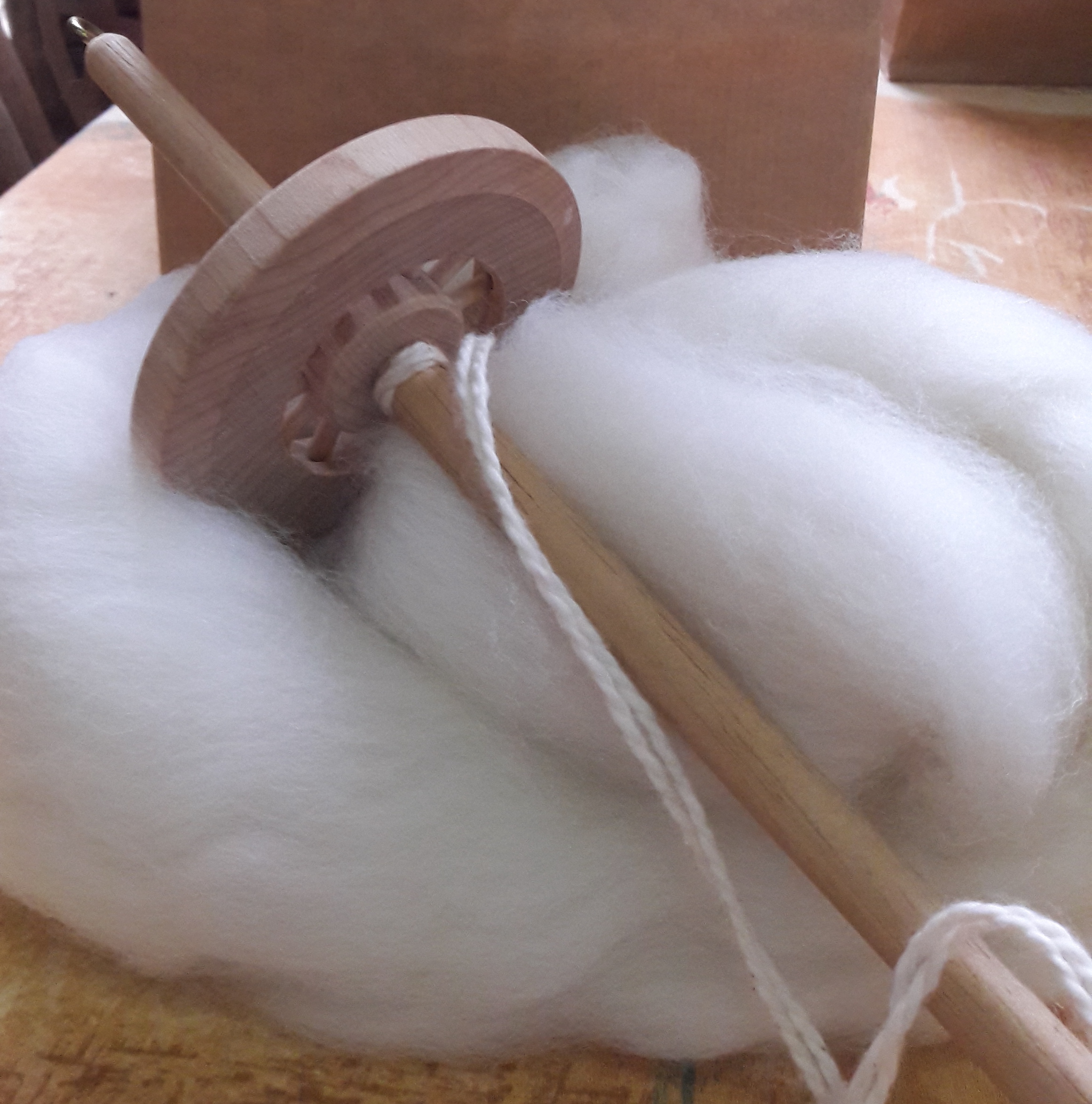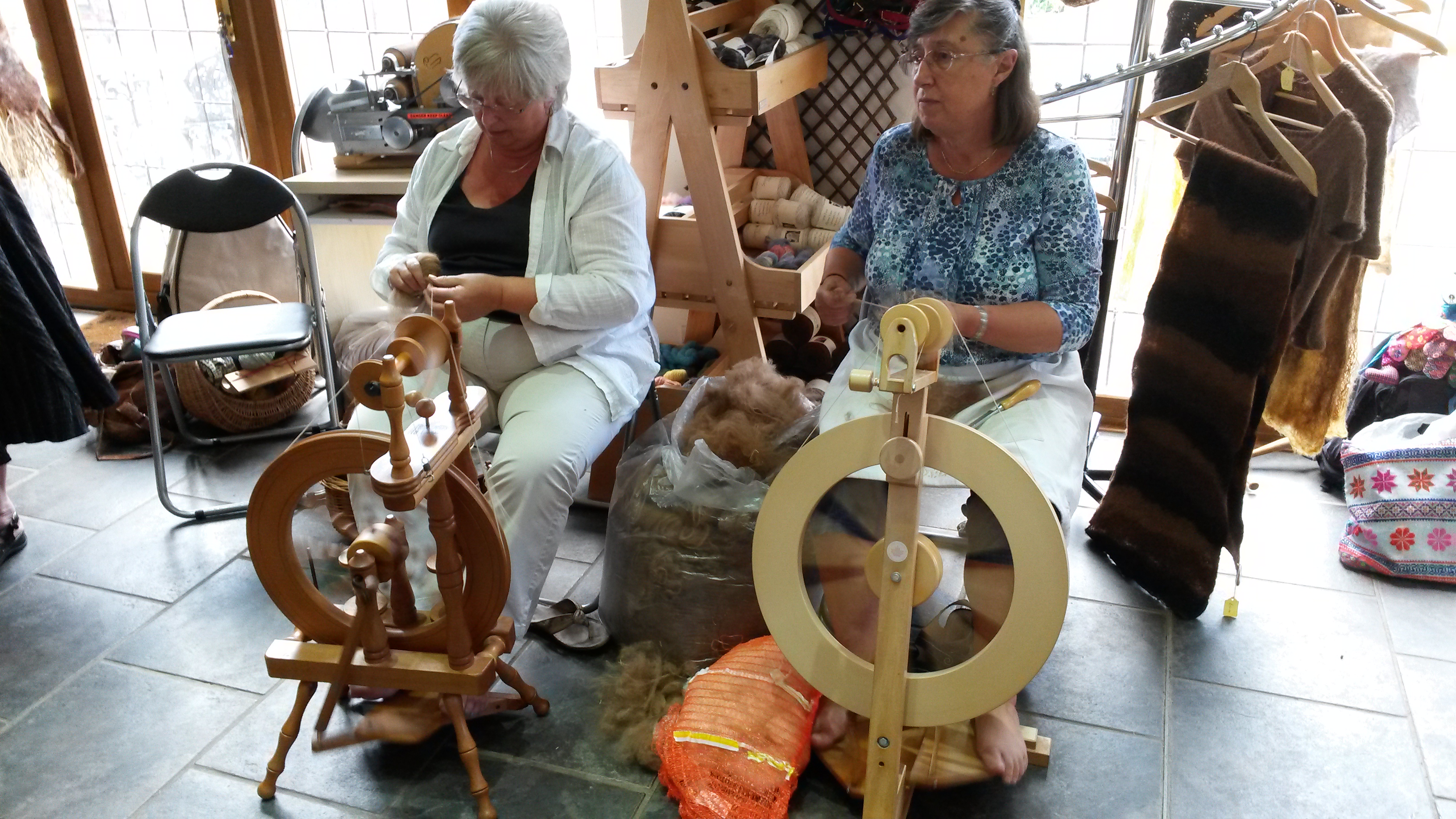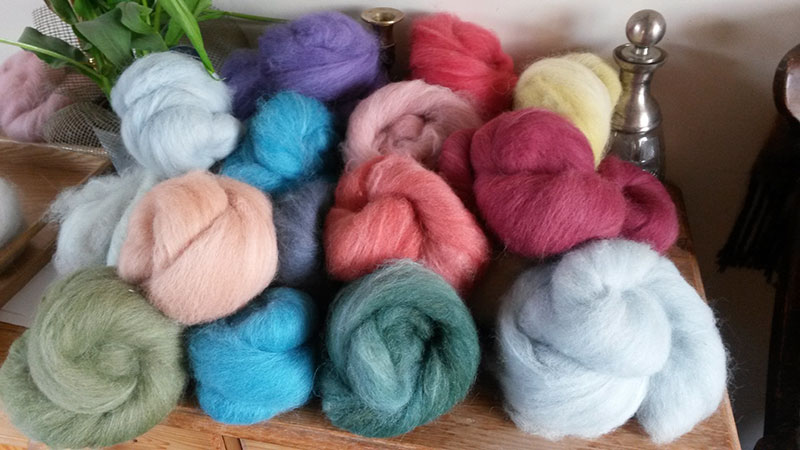|
Alpaca fibre is among the finest fibre in the world. Soft and long and in a range of beautiful natural colours, alpaca can be a joy to spin if you know where to start and what makes it different from sheep's wool. Learning how to spin is about understanding the process of drawing out the fibres and adding twist until you have created a continuous thread of stable yarn. Starting out on a hand spindle is a great way to master the craft with a minimum of expense and equipment. Drop spindles are ancient tools that were a necessity in ancient times and are still used in many parts of the world to produce thread and yarn. Luxuriously soft, long, and available in a wide range of beautiful natural colours, spinners love alpaca fibre. It is a long fibre with no crimp, so it doesn’t stretch and bounce the way wool does. Sheep’s wool also contains a lot of lanolin (grease) and most spinners like to scour the wool to remove excess lanolin before they spin it. Alpaca doesn’t have the same grease content, so it can be spun raw (or unwashed) pretty easily. Alpaca is different from sheep's wool—it is a long fibre with no crimp—so it doesn't stretch and bounce the way wool does. Incredibly warm and soft, alpaca fibre can make luxurious garments if you know how to work with it. But if you approach it just as you would sheep's wool—you'll be in for some surprises. For instance, sheep's wool contains a lot of lanolin (grease), and most spinners like to scour the wool to remove excess lanolin before they spin it. Alpaca doesn't have the same grease content—so it can be spun raw pretty easily, though it may contain a lot of dust or vegetable matter. Just as with sheep's wool, when you wash alpaca fibre, you have to be careful not to felt it. Alpaca fibre also takes dye beautifully—you'll find that the colours will be a little more muted than they would be on most sheep's wool because the fibre is soft and not as lustrous. Because alpaca fibre doesn't have the same fibre structure as wool (no crimp), the yarn requires more twist to stay together as well as hold its shape over time. If you spin a softly spun, thick yarn, and then knit a heavy sweater, the garment is likely to grow over time as the fibre stretches. There are two basic breeds of alpacas: Huacaya and Suri. The rich deep colours and crimpy waves of Huacaya alpaca have made it very popular among spinners. The slender, angular Suri, with a topknot over its eyes, has slick, lustrous fibre that hangs in ringlets called roping. Some people really struggle with alpaca spinning—mostly because they learned how to spin on sheep's wool and expect it to behave the same way. But as you work with alpaca fibre regularly, you will start to appreciate its unique properties and learn how to spin it to best advantage. If you want to find out more about preparing alpaca fibre and learning to spin, take a look at our courses here. |



.jpg)

